SCM5B33-05C
Isolated True RMS Input Module
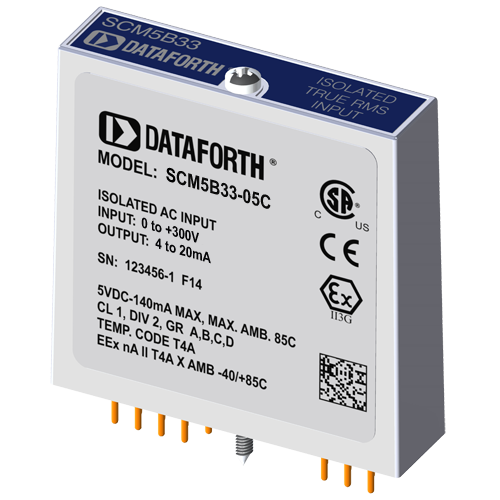
SCM5B33-05C
Isolated True RMS Input Module
Product Availability:
- Usually stock to 3-5 weeks. Contact Customer Service for current lead times.
SCM5B33-05C added to cart.
Description
Each SCM5B33 True RMS input module provides a single channel of AC input which is converted to its True RMS DC value, filtered, isolated, amplified, and converted to a standard process voltage or current output.The SCM5B modules are designed with a completely isolated computer side circuit which can be floated to ±50V from Power Common, pin 16. This complete isolation means that no connection is required between I/O Common and Power Common for proper operation of the output switch. If desired, the output switch can be turned on continuously by simply connecting pin 22, the Read-Enable pin, to I/O Common, pin 19.
The field voltage or current input signal is processed through a pre-amplifier and RMS converter on the field side of the isolation barrier. The converted DC signal is then chopped by a proprietary chopper circuit and transferred across the transformer isolation barrier, suppressing transmission of common mode spikes and surges. The computer side circuitry reconstructs, filters and converts the signal to industry standard outputs. Modules are powered from +5VDC, ±5%.
For current output models, an external loop supply of 4.2V to 26V is required. The loop supply connection, with series load, is between Pin 20 (+) and Pin 19 (-).
Read our Application Note 101, Measuring RMS Values of Voltage and Current.
Features
- Interfaces RMS Voltage (0 – 300V) or RMS Current (0 – 5A)
- Designed for Standard Operation with Frequencies of 45Hz to 1000Hz (Extended Range to 20kHz)
- Compatible with Standard Current and Potential Transformers
- Industry Standard Output of either 0-1mA, 0-20mA, 4-20mA, 0-5V or 0-10VDC
- ±0.25% Factory Calibrated Accuracy (Accuracy Class 0.2)
- 1500Vrms Continuous Transformer Isolation
- Input Overload Protected to 480V Max (Peak AC & DC) or 10A RMS Continuous
- ANSI/IEEE C37.90.1 Transient Protection
- CSA Certified, CE and ATEX Compliant
Block Diagram
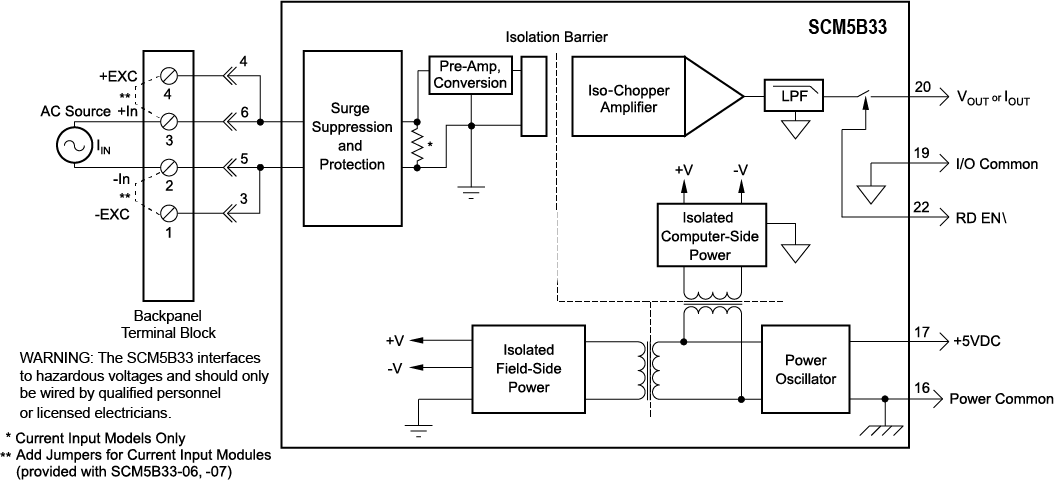
Documents
Datasheet
SCM5B33 Isolated True RMS Input Modules
SCM5B33 Isolated True RMS Input Modules
CAD Model
5B Module & Accessory 3-D CAD Models
5B Module & Accessory 3-D CAD Models
Specifications
- Input Range 0 to +300 V
- Output Range 4 to 20 mA
- Mechanical Format Modular plug-in-board
- Isolation Voltage 1500 Vrms
- Isolation Type Transformer 3-way
- Accuracy ±0.25% span
- Supply Voltage +5VDC ±5%
- Input Voltage/Current Withstand 480 Vpeak
- Gain/Offset Adjust N/A
- Module Bandwidth 45 to 20,000 Hz
- External I-to-V Resistor N/A
- Output Control Enable/Disable
- Output Resistance 50 Ohms
- Dimensions 2.28 x 2.26 x 0.60 inches
- Interface 14 pin
- Customization yes
- Weight 62 grams (2.19 ounces)
Accessories
PWR-4505
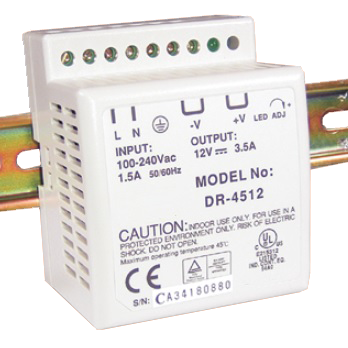
Power supply, 5A, 5VDC, 85 to 264VAC Universal, DIN mount, Switching power supply
View
SCM5B-PROTO
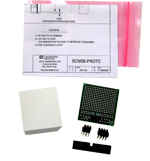
SCM5B breadboard kit
View
SCM5BPT
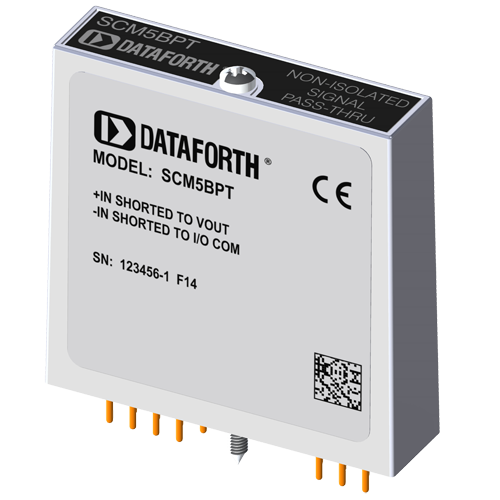
Pass Thru Module, Non-isolated, unity gain
View
SCM5BPT-1367

Pass Thru Module with Switch, Non-isolated, unity gain
View
SCMPB01
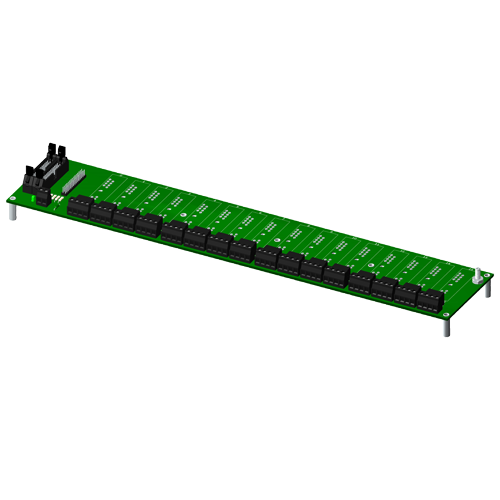
Non-multiplexed, 16 channel backpanel
View
SCMPB01-1
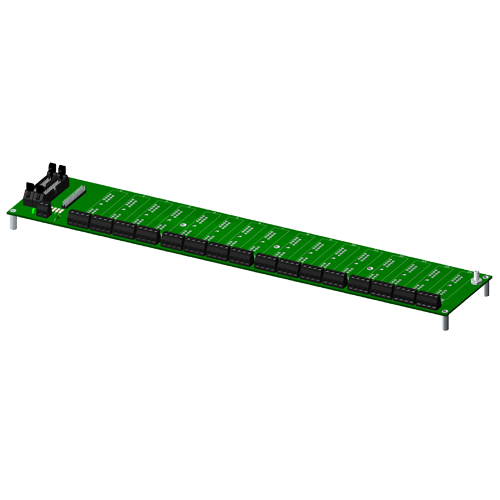
Non-multiplexed, 16 channel backpanel, no CJC
View
SCMPB01-2
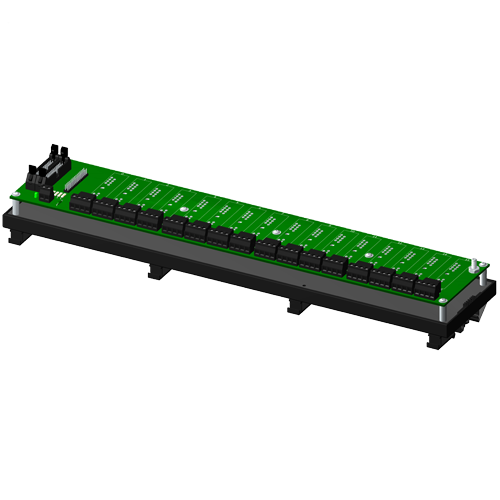
Non-multiplexed, 16 channel backpanel with DIN rail mounting option
View
SCMPB01-3
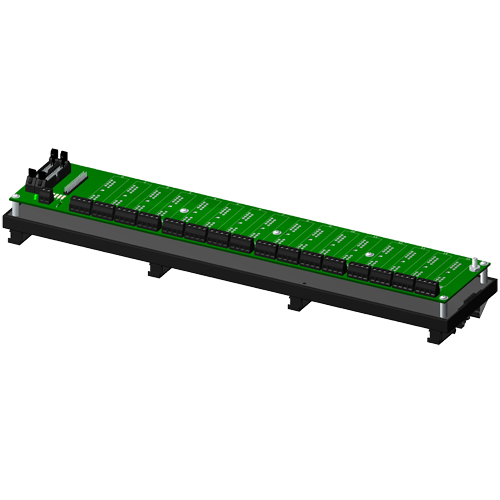
Non-multiplexed, 16 channel backpanel, no CJC, with DIN rail mounting option
View
SCMPB02
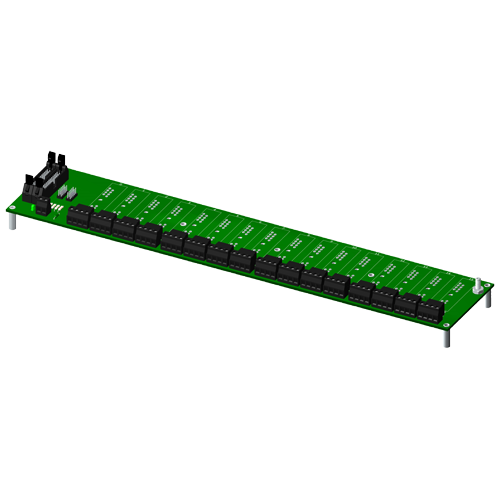
Multiplexed, 16 channel backpanel
View
SCMPB02-1
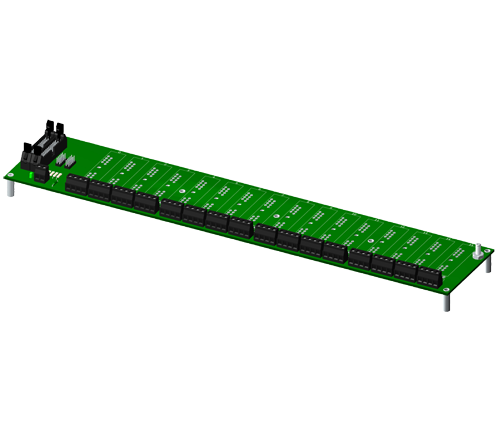
Multiplexed, 16 channel backpanel, no CJC
View
SCMPB02-2
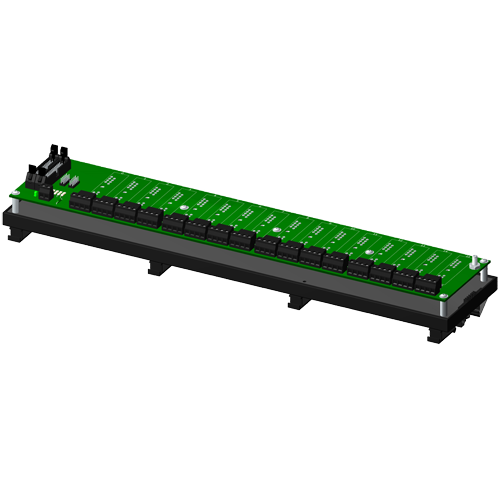
Multiplexed, 16 channel backpanel with DIN rail mounting option
View
SCMPB02-3
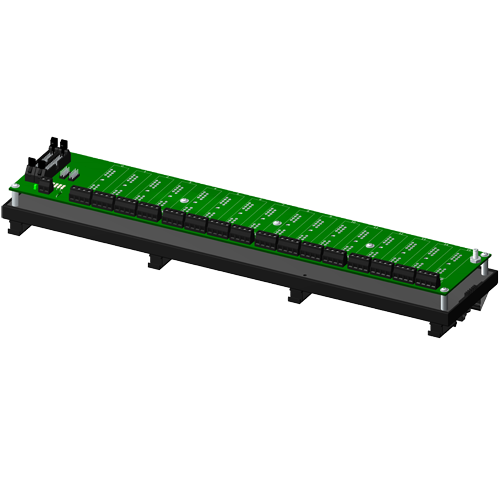
Multiplexed, 16 channel backpanel, no CJC, with DIN rail mounting option
View
SCMPB03
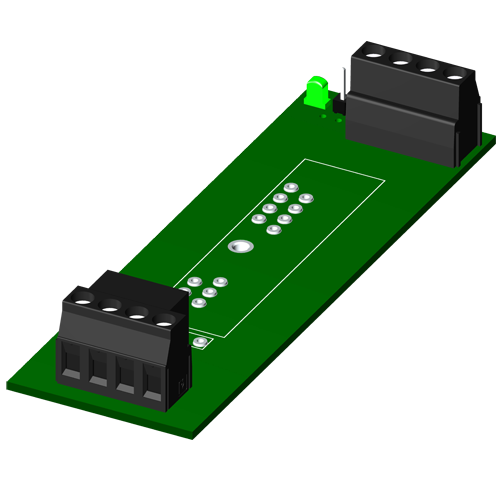
Single channel backpanel
View
SCMPB03-2
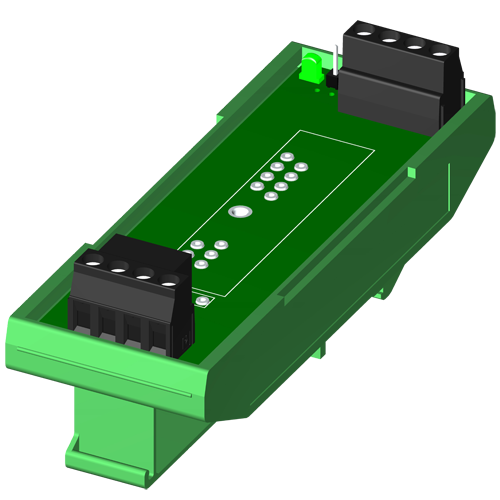
Single channel backpanel, DIN rail mount
View
SCMPB04
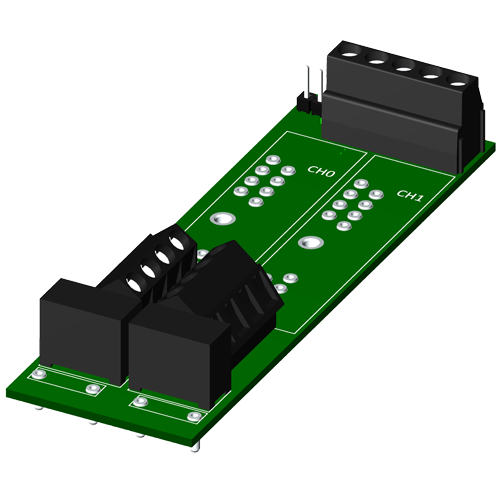
Dual channel backpanel
View
SCMPB04-1
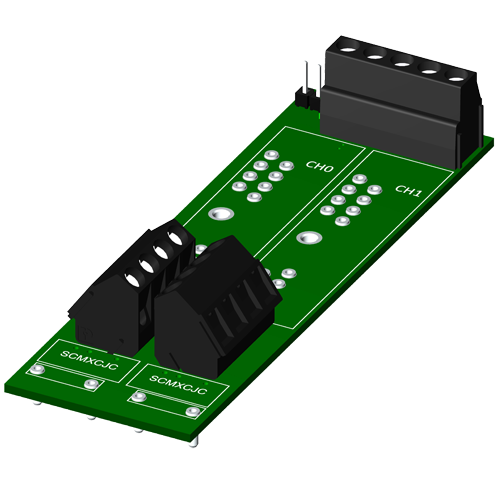
Dual channel backpanel, no CJC
View
SCMPB04-2
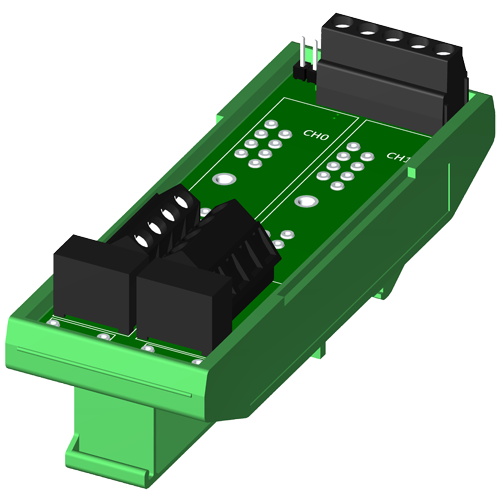
Dual channel backpanel, DIN rail mount
View
SCMPB04-3
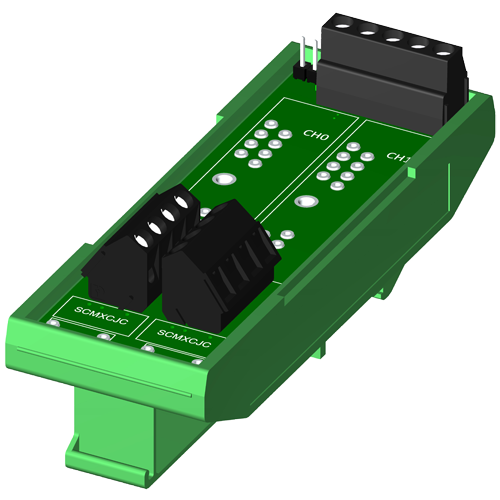
Dual channel backpanel, DIN rail mount, no CJC
View
SCMPB05
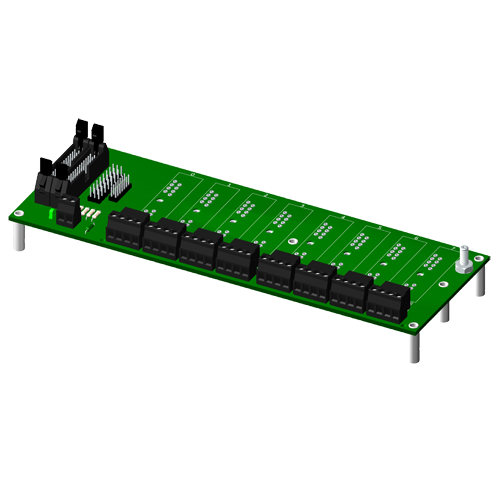
Non-multiplexed, 8 channel backpanel
View
SCMPB05-1
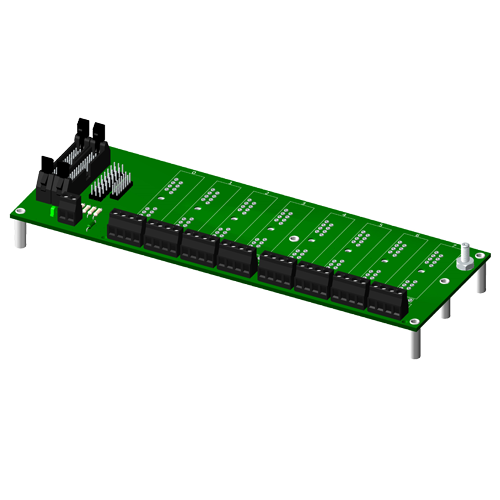
Non-multiplexed, 8 channel backpanel, no CJC
View
SCMPB05-2
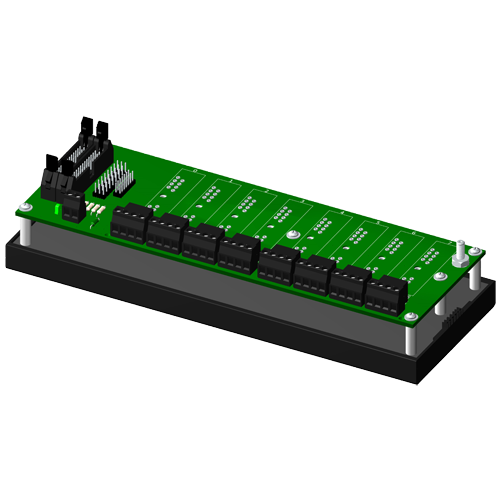
Non-multiplexed, 8 channel backpanel with DIN rail mounting option
View
SCMPB05-3
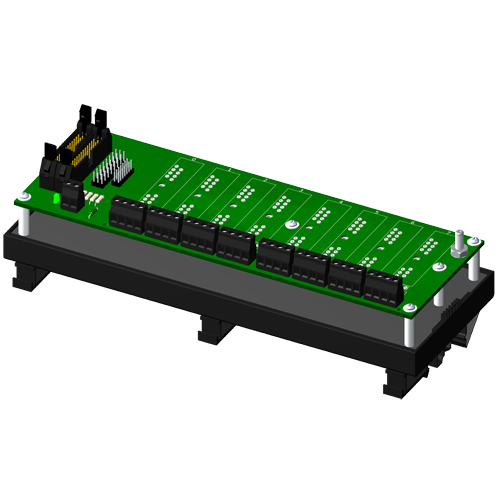
Non-multiplexed, 8 channel backpanel, no CJC, with DIN rail mounting option
View
SCMPB06
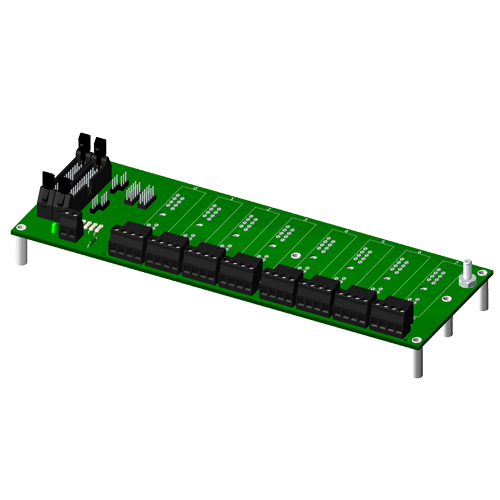
Multiplexed, 8 channel backpanel
View
SCMPB06-1
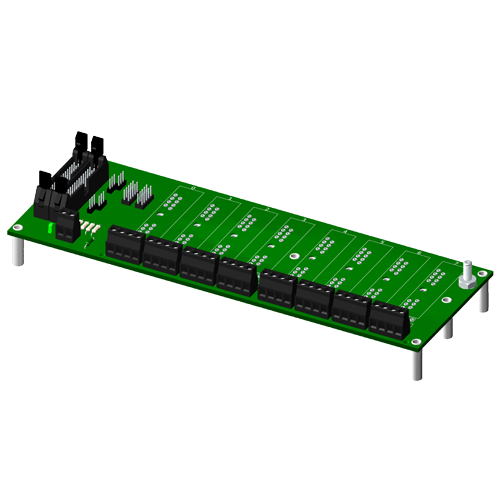
Multiplexed, 8 channel backpanel, no CJC
View
SCMPB06-2
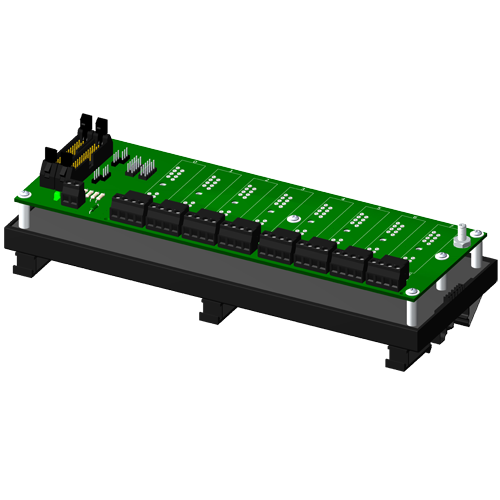
Multiplexed, 8 channel backpanel with DIN rail mounting option
View
SCMPB06-3
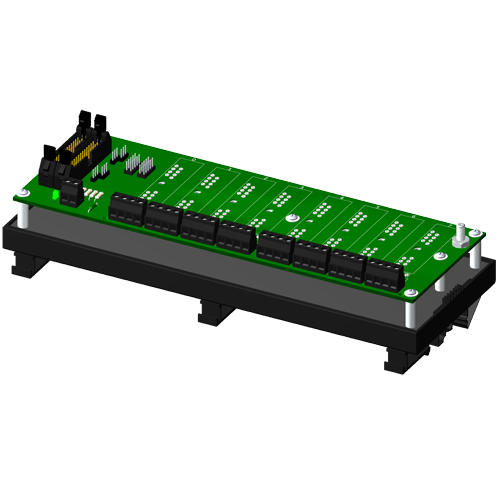
Multiplexed, 8 channel backpanel, no CJC, with DIN rail mounting option
View
SCMPB07
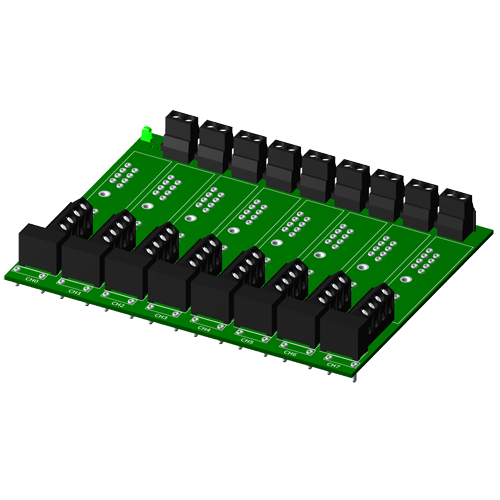
Non-multiplexed, 8 channel backpanel
View
SCMPB07-1
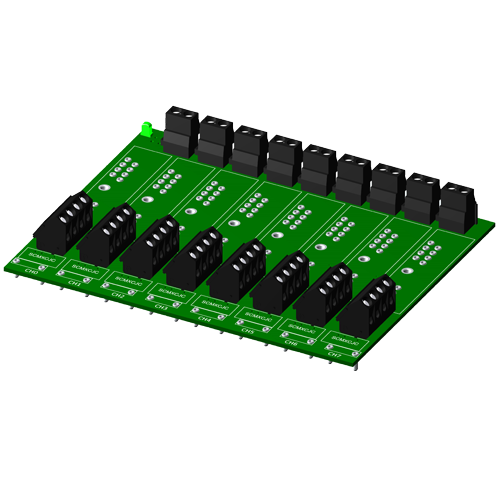
Non-multiplexed, 8 channel backpanel, no CJC
View
SCMPB07-2
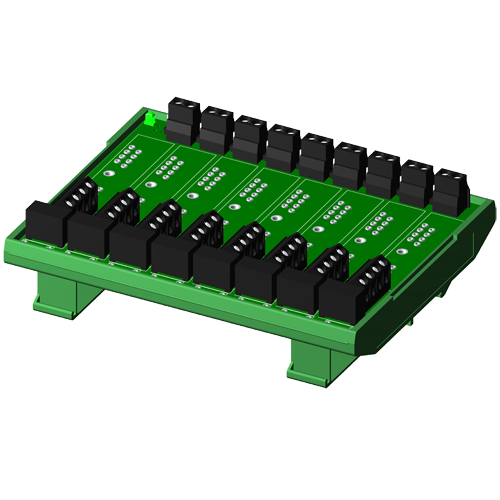
Non-multiplexed, 8 channel backpanel with DIN rail mounting option
View
SCMPB07-3
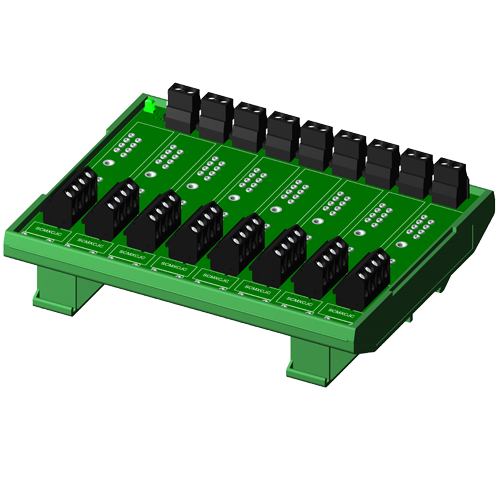
Non-multiplexed, 8 channel backpanel, no CJC, with DIN rail mounting option
View
SCMXBE
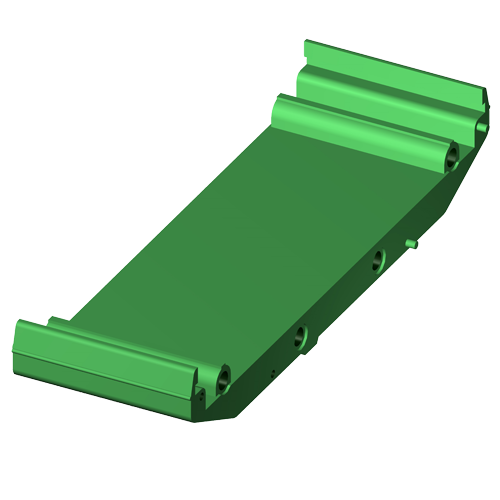
DIN rail base element without snap foot
View
SCMXBEFE
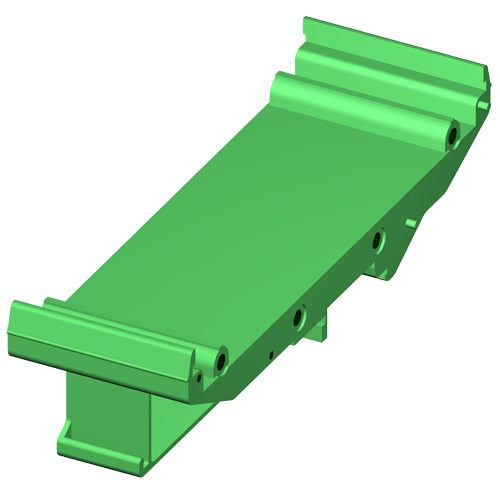
DIN rail base element with snap foot
View
SCMXCA004-01
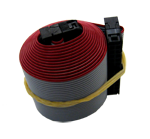
System interface cable for both analog backpanels, 1 meter length
View
SCMXCA004-02

System interface cable for both analog backpanels, 2 meter length
View
SCMXCJC
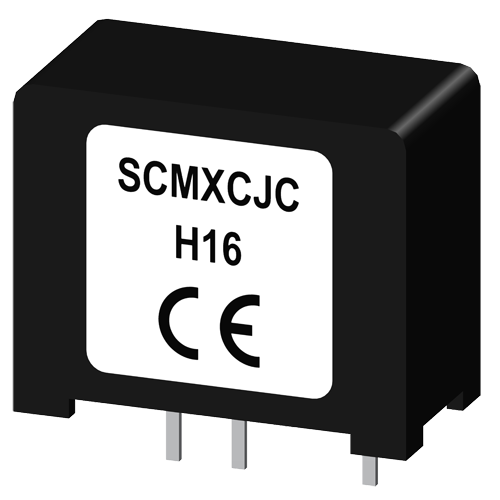
Encapsulated cold junction compensation circuit
View
SCMXDB37F25BP00
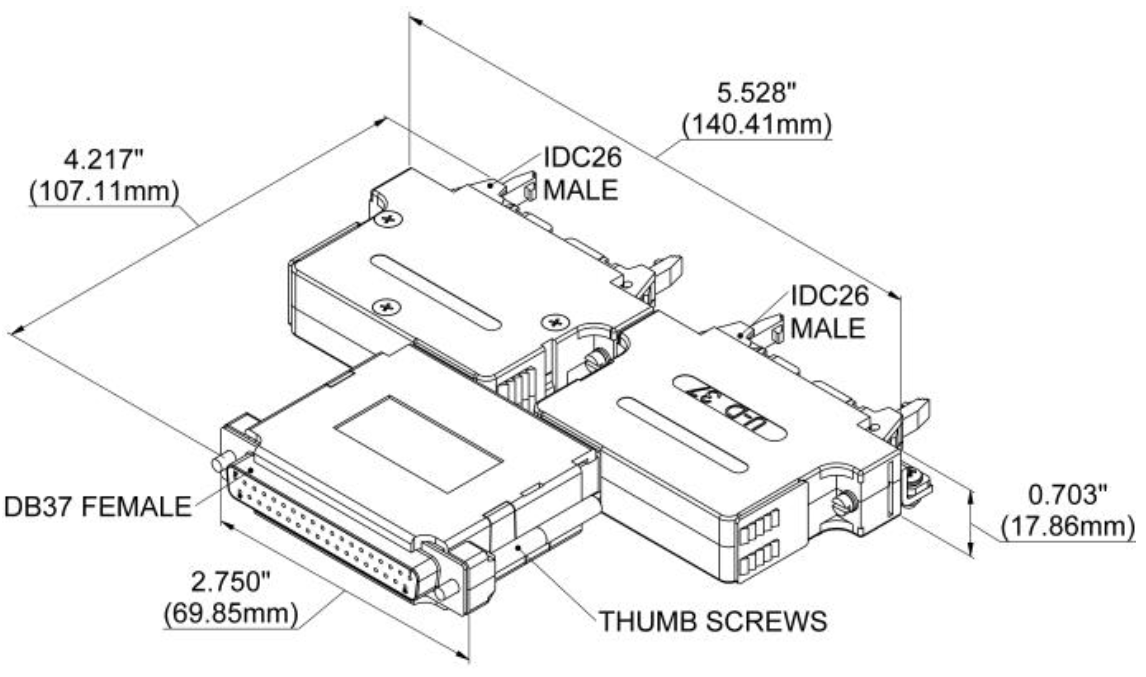
Third Party DAQ Front-Ending Adapter for Dataforth Backpanels
View
SCMXDB37F27BP00
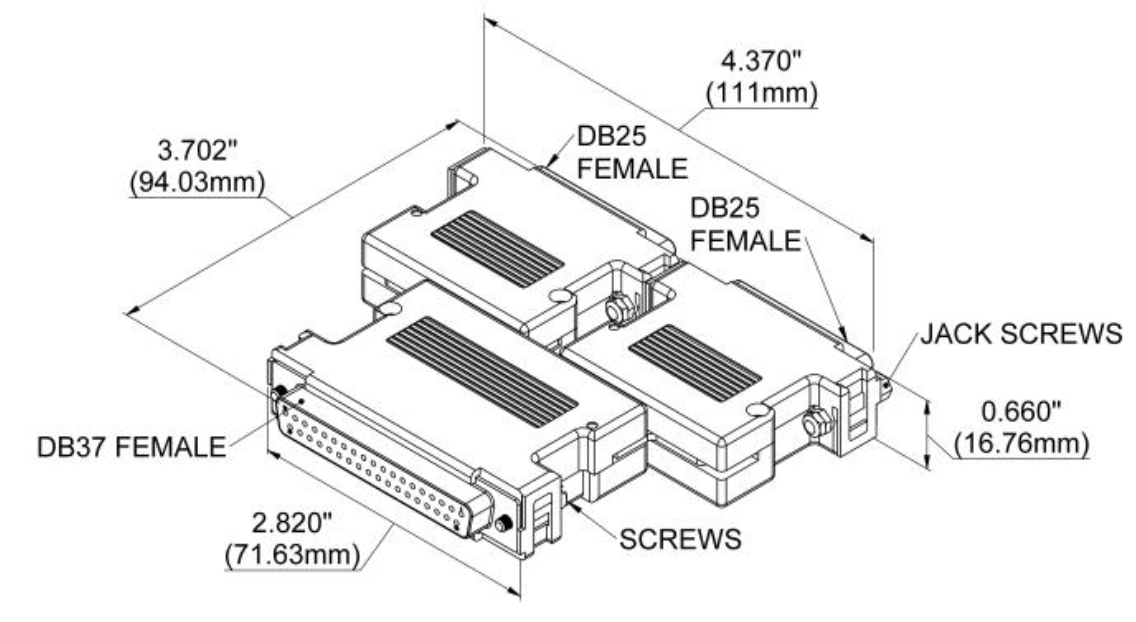
Third Party DAQ Front-Ending Adapter for Dataforth Backpanels
View
SCMXDB37F28BP00

Third Party DAQ Front-Ending Adapter for Dataforth Backpanels
View
SCMXDB37F5BP00
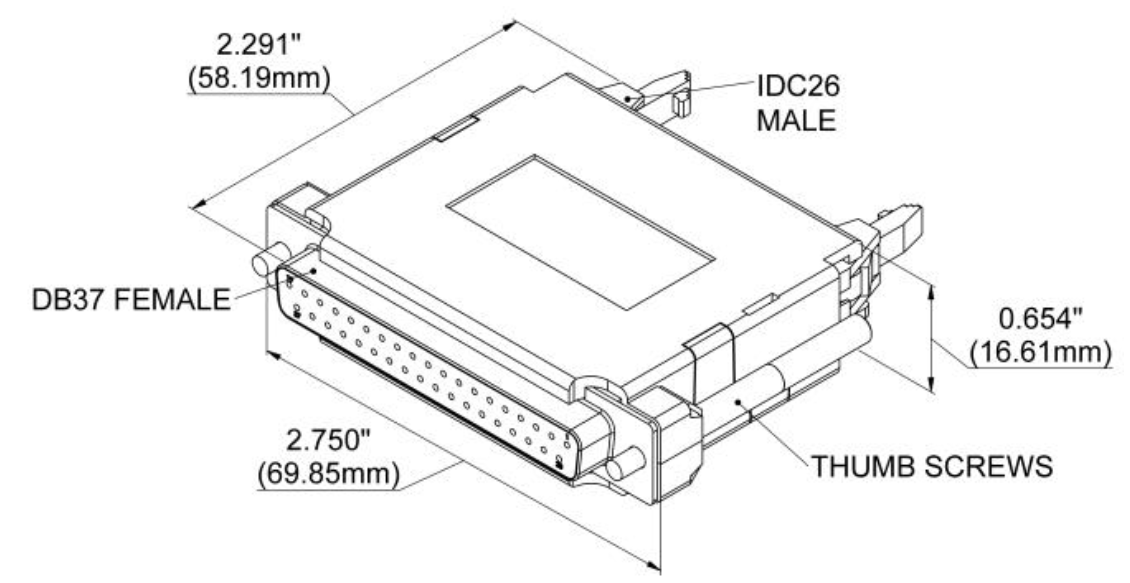
Third Party DAQ Front-Ending Adapter for Dataforth Backpanels
View
SCMXDB37F7BP00
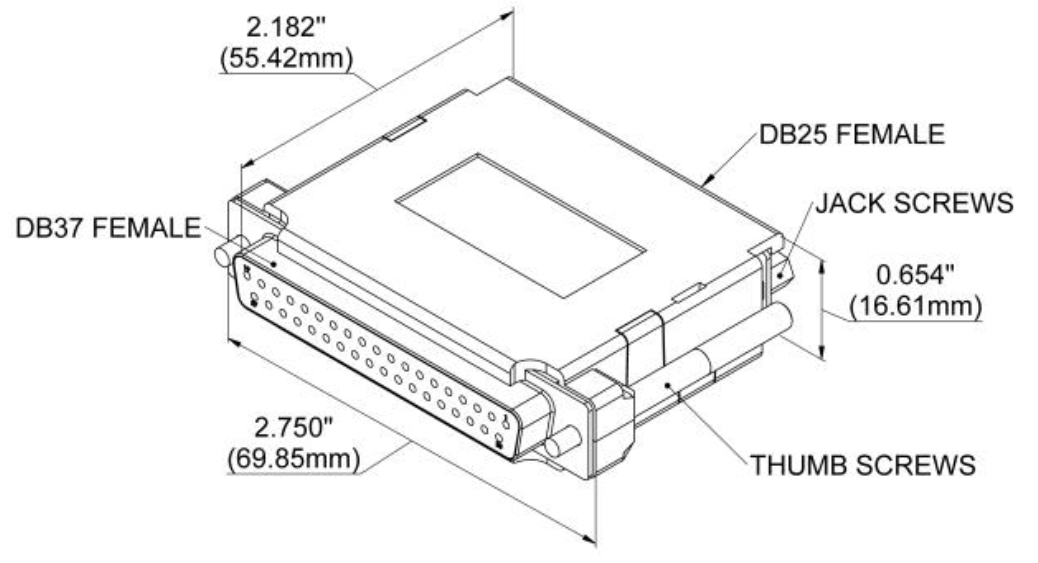
Third Party DAQ Front-Ending Adapter for Dataforth Backpanels
View
SCMXDB37F8BP00

Third Party DAQ Front-Ending Adapter for Dataforth Backpanels
View
SCMXEV
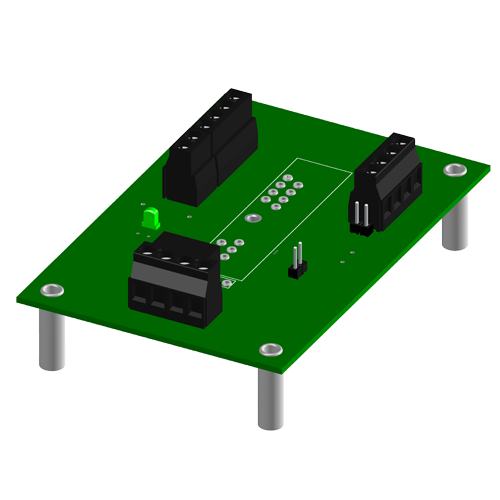
Single channel SCM5B evaluation board
View
SCMXFS-003
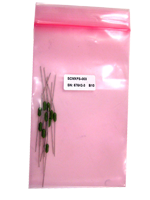
Package of 10, 4A fuses
View
SCMXIF
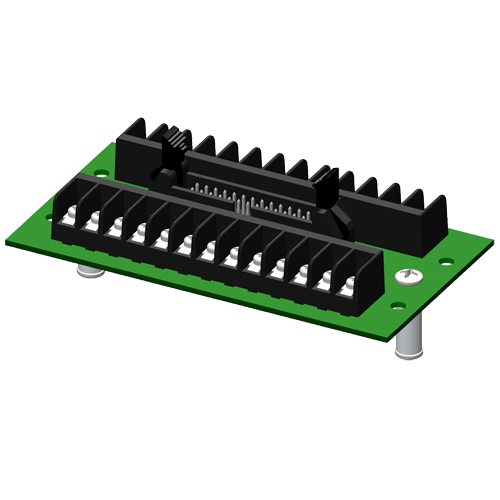
Ribbon cable to screw terminal interface board
View
SCMXIF-DIN
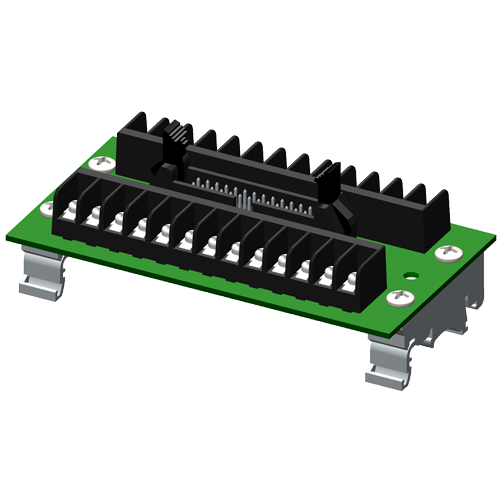
Ribbon cable to screw terminal interface board, DIN mount
View
SCMXJP-003
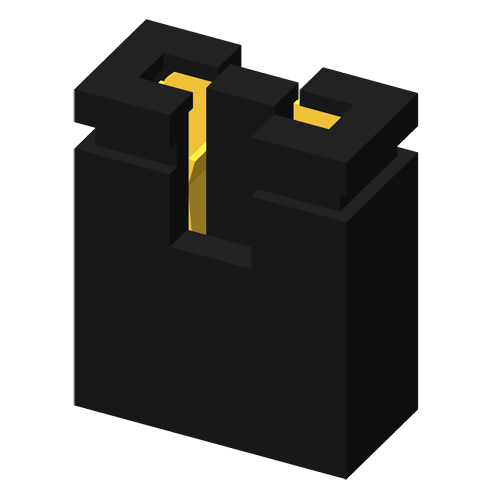
Package of 10 jumpers
View
SCMXPRE-001
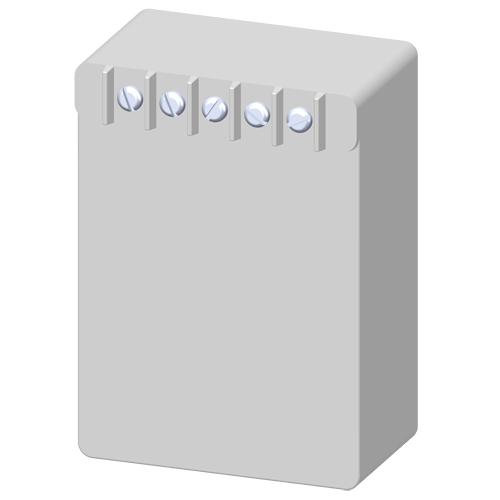
Power supply, 1A, 5VDC, 220VAC European
View
SCMXPRE-003

Power supply, 3A, 5VDC, 220VAC European
View
SCMXPRT-001
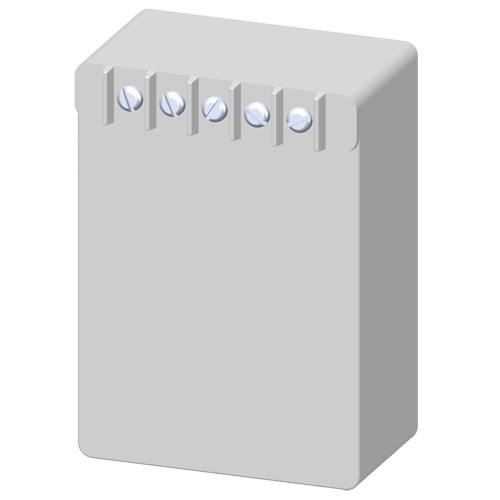
Power supply, 1A, 5VDC, 120VAC U.S.
View
SCMXPRT-003

Power supply, 3A, 5VDC, 120VAC U.S.
View
SCMXR1
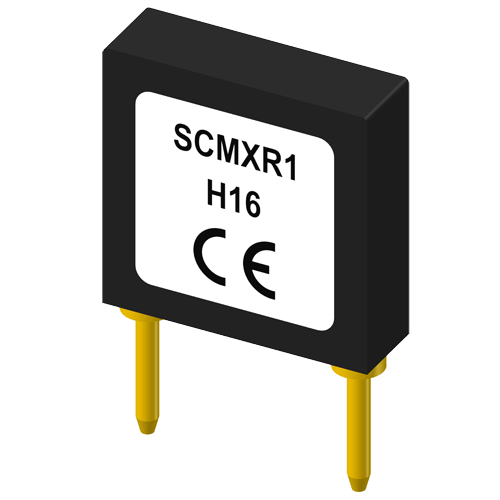
Precision 20 Ohm resistor for SCM5B32 and SCM5B42
View
SCMXRAIL1-1.0
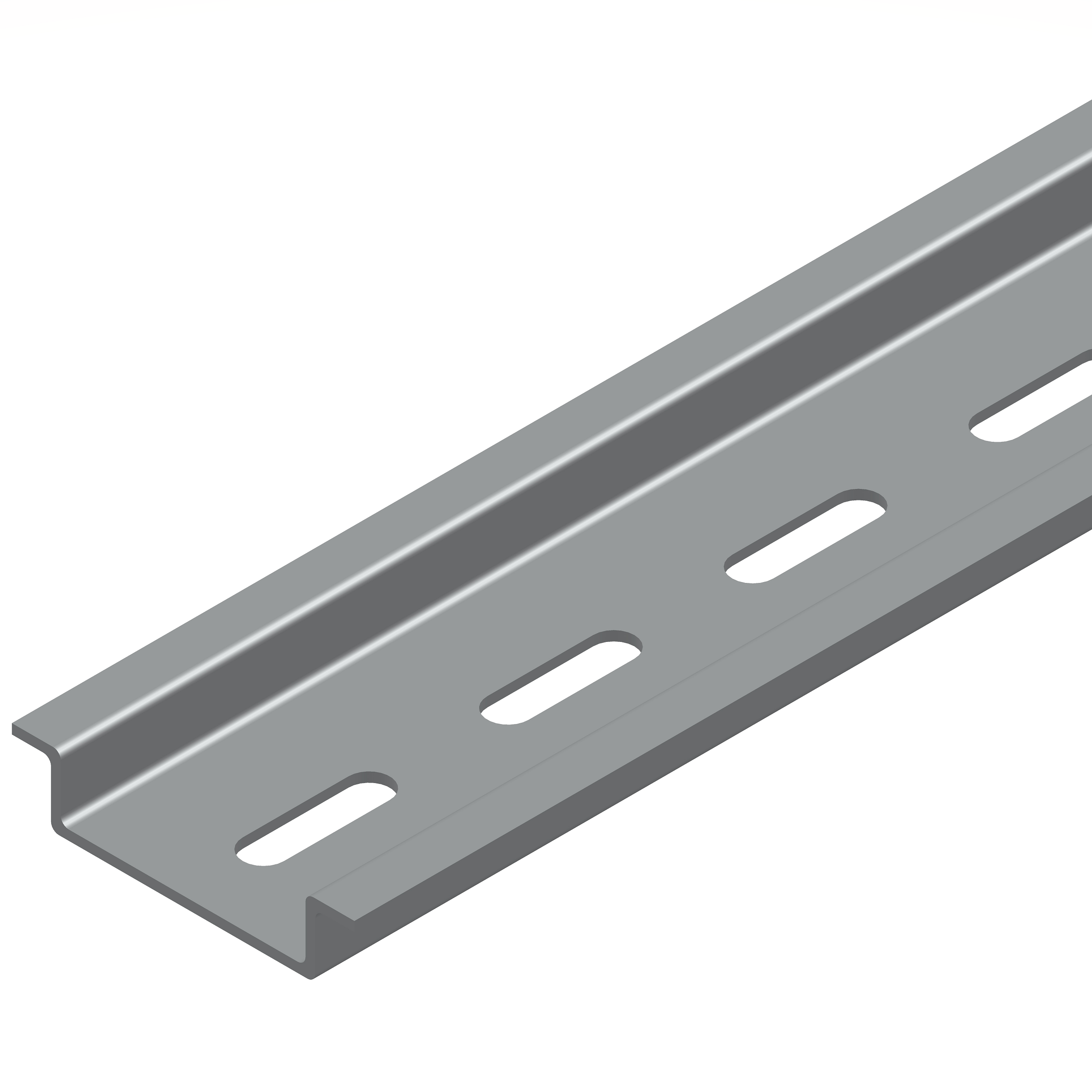
DIN EN 50022-35 x 7.5 (slotted steel), 1 meter length
View
SCMXRAIL1-2.0

DIN EN 50022-35 x 7.5 (slotted steel), 2 meter length
View
SCMXRAIL2-01
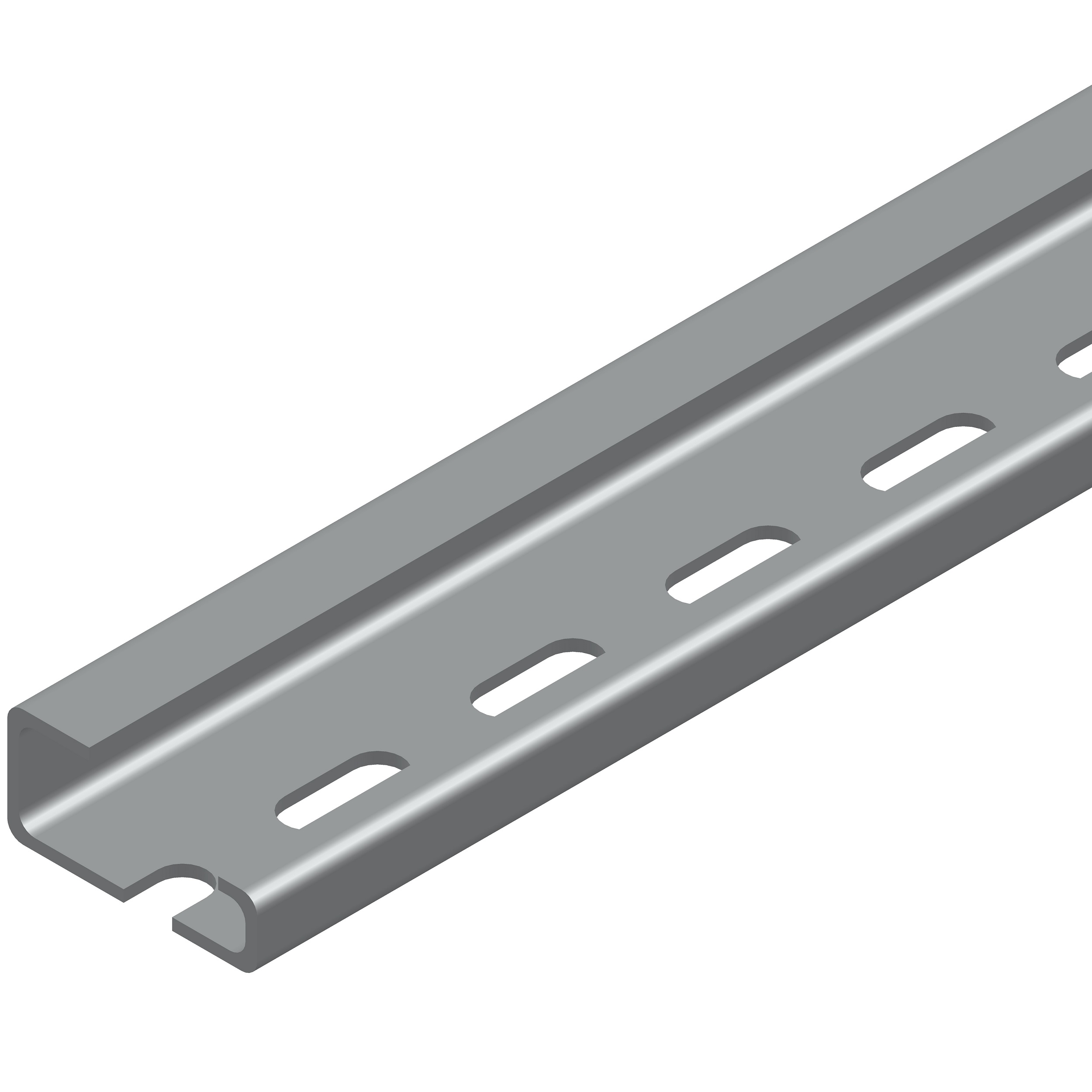
DIN EN 50035-G32 (slotted steel), 1 meter length
View
SCMXRAIL2-02

DIN EN 50035-G32 (slotted steel), 2 meter length
View
SCMXRAIL3-01
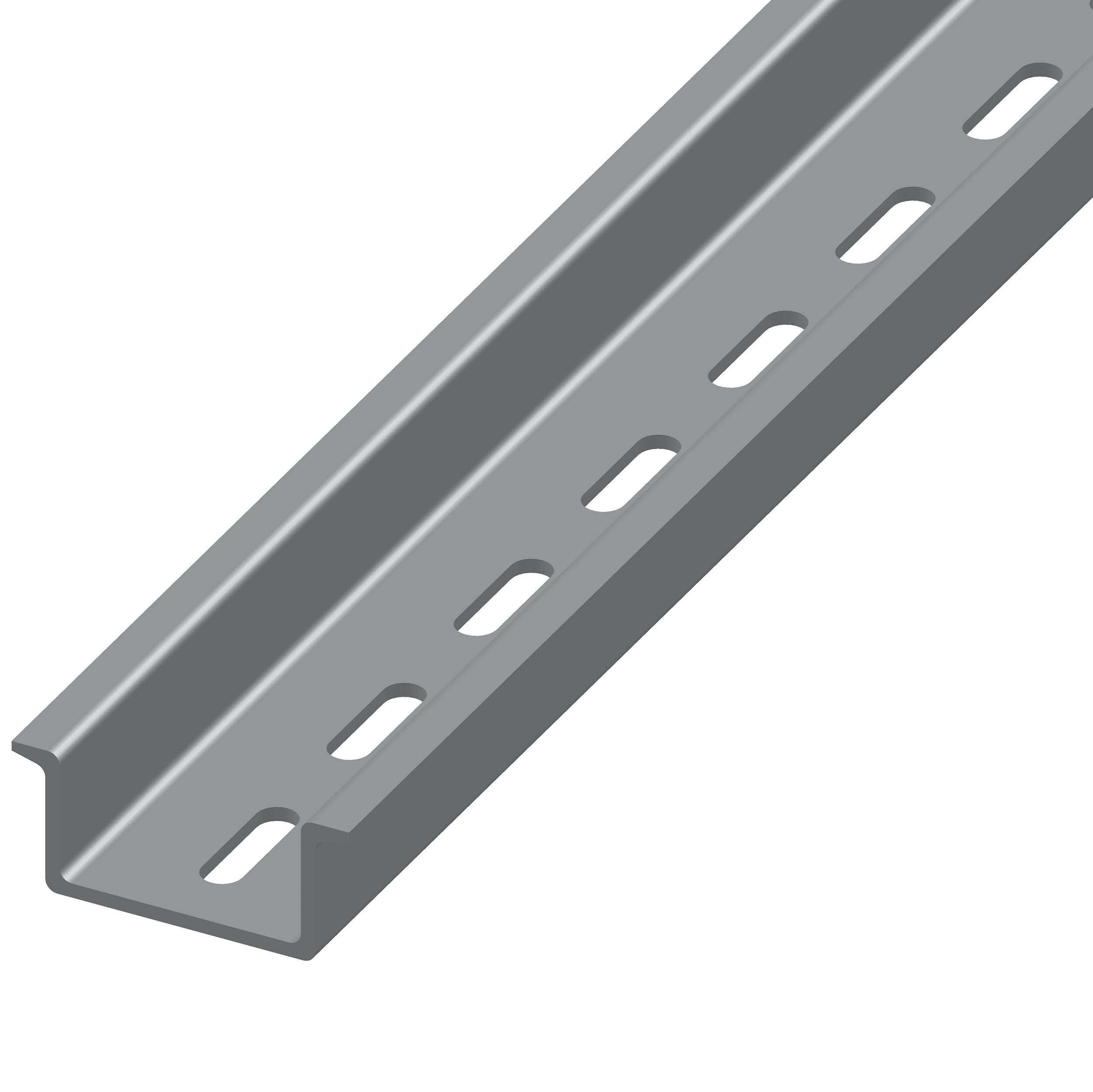
DIN EN 50022-35 x 15 (slotted steel), 1 meter length
View
SCMXRAIL3-02

DIN EN 50022-35 x 15 (slotted steel), 2 meter length
View
SCMXRK-002
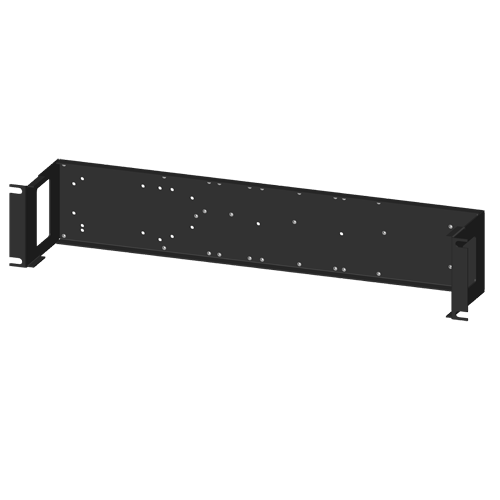
19 inch metal rack for mounting analog backpanels
View
SCMXSE
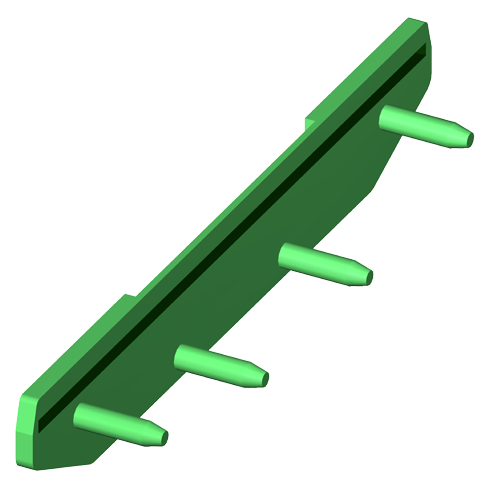
DIN rail side element
View
SCMXVS
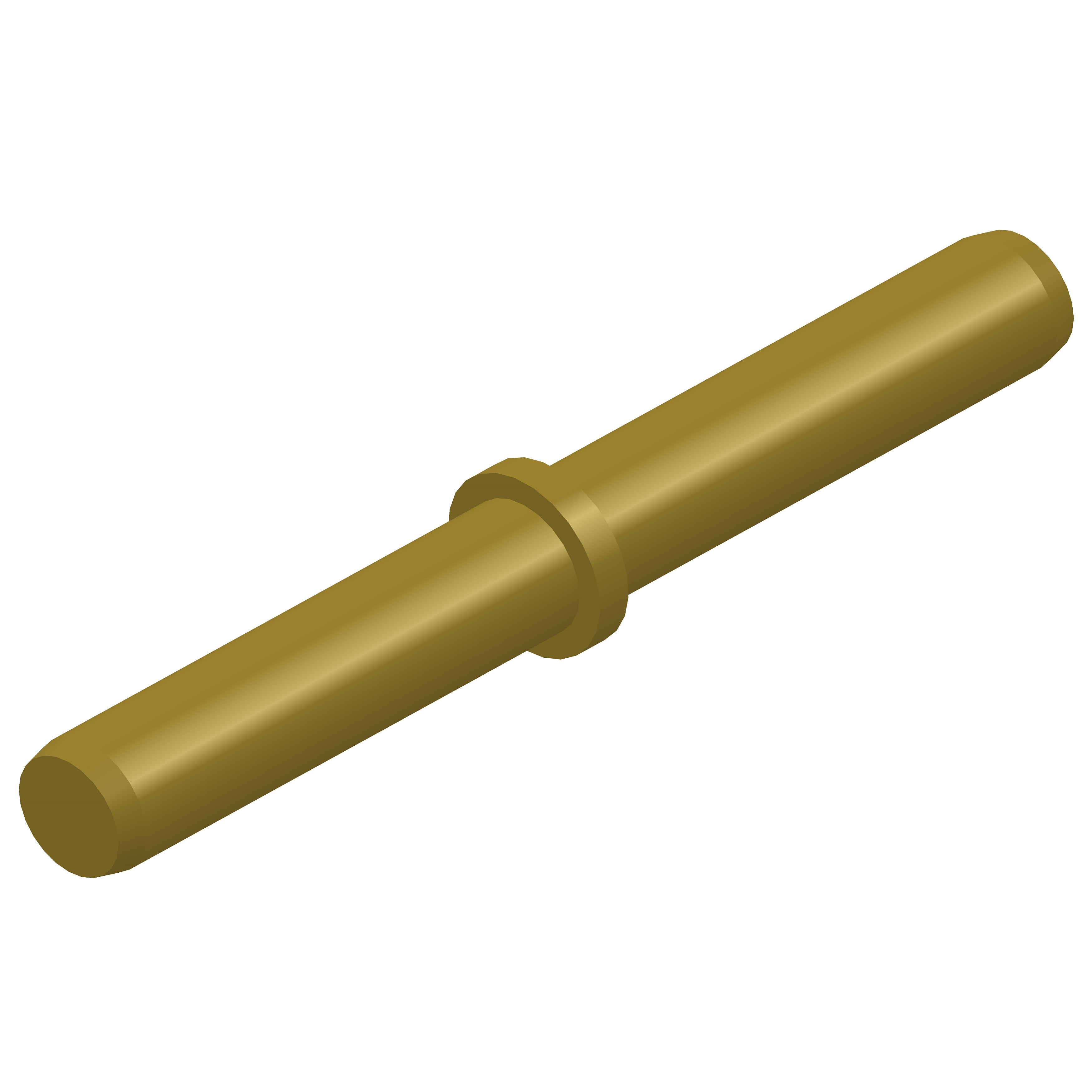
DIN rail connection pins
View
Competitive Cross-Reference
- The SCM5B33-05C equals the Analog Devices NOT AVAILABLE. For specific performance comparison, please review both datasheets.
The information available through this competitive cross reference guide are based upon product catalog information obtained from a variety of sources. The competitive cross reference information is being provided to you free of charge for your use. While Dataforth Corp has used reasonable efforts to ensure data accuracy, Dataforth Corp does not guarantee that it is error-free, nor does Dataforth Corp make any other representation, warranty or guarantee that the information is accurate, correct, reliable or up-to-date. Dataforth Corp expressly disclaims all implied warranties regarding this information, including but not limited to any implied warranties of merchantability or fitness for a particular purpose.
This information is provided only as a convenience on an "as is" basis and Dataforth Corp. or its representatives or distributors are not responsible for any incorrect, inaccurate, or incomplete information. You are solely responsible for (1) selecting the appropriate Dataforth products for your application, (2) designing, validating and testing your application, and (3) ensuring your application meets applicable standards, and any other safety, security, or other requirements.
This information is provided only as a convenience on an "as is" basis and Dataforth Corp. or its representatives or distributors are not responsible for any incorrect, inaccurate, or incomplete information. You are solely responsible for (1) selecting the appropriate Dataforth products for your application, (2) designing, validating and testing your application, and (3) ensuring your application meets applicable standards, and any other safety, security, or other requirements.
FAQ
Is there an alternative for DC coupled input signal conditioning for signal conditioning to RMS? I understand SCM5B33-03 is AC coupled therefore it discards the offset or bias in the DC equivalent computation of the RMS whole signal.
Dataforth does not currently offer an equivalent True RMS module for DC coupled inputs, but a two module solution could be implemented depending on the parameters of the DC offset and the AC waveform.
Such an implementation was tested with an SCM5B33-03D True RMS Input Module (0-10Vrms input and 0-10VDC output) and an SCM5B31-02 Narrow Bandwidth Voltage Input Module (+/-5V input and +/-5V output). The inputs to these modules were tied in parallel and connected to a waveform generator with a specified VDC offset and VAC waveform within the input limits of the two modules. The outputs of the modules were then connected in series to get a combined output equal to the sum of their individual output voltages. Both modules were mounted on their own SCMPB03 single channel backplanes in order to maintain separate I/O COM lines for the required series connections to be made on the outputs. Alternatively a single SCMPB07 8-channel backplane could have been used since it allows for isolation of each channel's I/O COM line via a provided jumper. Please note that this combined module configuration will result in a small increase in total error since each module's parameters for accuracy are added up.
If a two module configuration is not possible for a specific application, a custom version of the SCM5B33 with revised coupling circuitry might be possible depending on the required specifications. Be aware that custom module designs are subject to NRE charges and require a 10pc minimum quantity order.
What is the DC channel to channel isolation on SCM5B backpanels?
DC channel to channel isolation for all SCMPB backpanels is 2121 VDC.
Can Dataforth analog modules be used in high vibration environments? If so, what type of testing or certification was completed?
SCM5B, SCM7B, 8B SensorLex, and DSCA modules are well suited for use in high vibration environments. These modules and their associated accessories have undergone testing for random vibration, shock, and swept sine wave vibration. Details of each of these testing methods are provided below:
Random Vibration (Operating):
○ MIL-STD 202G, Method 214A, Condition 1
- Frequency Range: 50-2000Hz, flat spectrum
- Vibration Intensity: 7.56 Grms
- Duration: 10min/axis (X, Y, Z)
Shock (Operating):
○ MIL-STD-810F, Method 516.5
- Pulse Shape: Sawtooth
- Test Level: 30G
- Duration 11ms
- Orientation: +/-X, +/-Y, +/-Z
Swept Sine Vibration (Operating)
○ MIL-STD-810G, Method 514.6, modified
- Frequency Range: 10-2000Hz
- Vibration Intensity: 5Gp-p
- Sweep Rate: 1 octave/min
- Orientation: X, Y, Z
Declaration of conformity for the above-listed tests can be provided upon customer request. Please contact customer service if a copy of the declaration is needed.
Can the SCM5B33 be used with PWM input signal?
Yes, the SCM5B33 True RMS input module can be used with a PWM input signal. The module can be used with both sinusoid and non-sinusoid inputs. Module accuracy varies slightly based on the crest factor of the input waveform. Please refer to the "Specifications" section of the SCM5B33 datasheet for additional information on how crest factor affects module accuracy.
Due to resource constraints on my computer, I'm unable to open the three dimensional CAD models provided on your website. Does Dataforth provide two demensional CAD models for download as well?
Two dimensional CAD models can be generated upon customer request. Please contact Customer Service for assistance.
What does it mean when an input module has for example a 3kHz bandwidth?
A 3kHz bandwidth on an input module means it can accept voltages from DC to 3000Hz. Any frequency higher than that and the signal will start to be attenuated by the filter at the input.
Can SCM5B modules be hot swapped?
Not just SCM5B modules, but any signal conditioning module series and MAQ20 I/O modules can be hot swapped. A minimal amount of signal settling time may result, but there will be no damage to the device.
What does "Response time, 90% span" mean on the datasheet for my module?
Normally, a response time figure refers to how quickly a module's output can "respond" to a change in the input signal. "Response time, 90% span" refers to how fast a module can adjust its output when a step signal is applied at the input, where the magnitude of this step input is 90% of the input span of the module.
Can the DIN rail mounting hardware be easily removed from the SCMPB04?
Yes, the DIN rail mounting hardware for the SCMPB04 can be easily detached and reattached from the board.
Where can I find the pinout of my SCM5B module?
Please see the SCM5B Module Dimensions and Pinouts link from the SCM5B section of our website: https://www.dataforth.com/catalog/pdf/scm5bdim.pdf
You can also find the module dimensions and pinouts in our product catalog.
Can the SCM5B33 be used in the SCMVAS system?
It is possible to use the SCM5B33 with SCMVAS. However, the output impedance of the SCMVAS-MXXX module at around 14.8k will be loaded by the input 1Mohm input impedance of the SCM5B33-02. This results in an approximate -1.5% positive full scale error.
What types of DIN rails does the DIN rail mounting of the SCMPB04 attach to?
The DIN rail mounting of the SCMPB04 can mount to DIN rail types EN 50022-35x7.5, EN 50022-35x15, EN 50035-G32. These can be purchased as part numbers SCMXRAIL1-XX, SCMXRAIL2-XX, pr SCMXRAIL3-XX where XX is specified as the length of the rail in meters.
Where can I find the MTBF of my module?
Information on MTBF for SCM5B, SCM7B, 8B and DSCA is available on our website. Please see application note AN802 for more details. Application notes can be found under the "Literature" tab on the top navigation bar.
Is the SCM5B40-06 sensitive to being soldered into a board? Would soldering it damage the part?
We do not recommend soldering the SCM5B pins to a board as it could potentially damage the module. Soldering the pins would also void the warranty.
Many sockets are available which accept the mounting pins. TE Connectivity / AMP part number 50865-5 is an example of these sockets and any equivalent part will work as well.
On the SCM5B modules, what is the purpose of pin 18 (Vin), why is it tied to pin 20 (Vout)? Doesn't Vout provide the output by itself?
Vout is used with input modules, which are all the SCM5B models except for the SCM5B39 and SCM5B49. Vin is used for output modules, SCM5B39 and SCM5B49.
The reason for doing this is because input modules acquire a signal from the field side, and then output a corresponding signal to the system side. On the contrary, output modules acquire a signal from the system side, and then output a corresponding signal to the field side. Since SCM5B backplanes are designed for all channels to accommodate either an input or an output module, the terminal/pin that you would normally get your output signal from if you were using an input module is the same terminal/pin that you would be feeding your input signal to if you were using an output module.
Is the calibration of Dataforth modules traceable to NIST standards?
Yes, calibration of Dataforth modules is traceable to NIST standards.
Can I use the SCMXBEFE and SCMXSE accessories to make my SCMPB01/2 DIN rail mountable?
No, converting any of the 16 channel SCM5B backplanes to something DIN rail mountable is a much more involved process than the SCMPB03/04. If you would like a 16 channel SCM5B backplane that can mount on a DIN rail you must purchase an SCMPB01-2, SCMPB01-3, SCMPB02-2 or SCMPB02-3.
Do SCM5B modules with outputs scaled up to 10V have separate power requirements from their 5V counterparts?
No, all SCM5B modules have the same power requirements (5VDC) regardless of their I/O specifications. The power supply current draw of different products in the SCM5B line may vary.
If I purchase a backplane with no CJC, will I still be able to use modules that require the CJC enable jumper to be installed?
Yes. Backplanes with no CJC will still come with the CJC enable installed on the backplane.
What is the required resistance for jumpers J1 through J4 on my SCM5B backpanel?
J1-J4 on the SCM5B backpanels are jumper cables, so they should have 0 ohm resistance.
Should I ground my sensor wire shield to the 10-32 ground post on the SCMPB01?
It is not recommended to ground the sensor wire shield to the 10-32 ground post on the SCMPB01 because that is the system side ground, while the sensor wire is on the field side. The sensor wire shield should be grounded to the field side ground, which varies based on the signal conditioner you are using. Please see the "Shield Grounding" application note for more information.
I just received an SCMPB01 back panel. How should I configure jumpers J1 through J4 for my application?
The factory configuration for jumpers J1 through J4 is the optimal configuration for most applications. If for some reason this jumper configuration will not work/is not working in your application, see our application note AN502 "Ground Connections and Host System Interfaces" for other valid jumper configurations and what situations you would use them.
Do I need to purchase the SCMXCJC with my SCMPB03?
No, the SCMPB03 comes with the CJC built into the backpanel.
Do you have an MTBF figure for the SCM5B39? What are the main failure modes?
The failure rate calculations for our SCM5B modules can be found in our application note AN503: https://www.dataforth.com/catalog/pdf/an503.pdf
There are no dominant failure modes.
Can I use an SCM5B module with my OM5-BP-SKT-C?
Yes, any of our SCM5B modules are able to be mounted and operated on Omega's OM5-BP-SKT-C board.
Do you have any SCM5B modules with a 50kHz bandwidth?
None of our standard SCM5B modules have a 50kHz bandwidth. However, it is possible to order a custom SCM5B module with 50kHz bandwidth. Keep in mind that new customs require a 10 pc minimum order and are subject to extra design fees.
Will the isolation on the SCM5B modules support a discharge of 1500VDC without damaging anything connected to the output?
Yes, the SCM5B modules are isolated up to 1500 Vrms, which means that if the common mode voltage between the field side and system side is limited to 1500Vrms, the device will be protected.
However, the input protection for SCM5B modules (i.e., the voltage across the +IN and -IN input terminals) is 240Vrms max.
How does the load resistance of a module affect the noise at the output?
Noise at the output of a module is independent of load resistance.
How do I convert an RMS voltage to its corresponding peak voltage?
To convert an RMS voltage to its corresponding peak voltage, you simply take the RMS voltage value and multiply it by the square root of 2, or roughly 1.414.
For example, 1500Vrms corresponds to a peak voltage of 1500 * 1.414 = 2121 Vp
If the input range of my signal conditioner is -1V to +1V and the output range is 0 to 10V, does this mean that it ignores polarity?
A signal conditioner with these I/O ranges does not mean that the module ignores the polarity of your voltage input. The output of voltage input modules are scaled linearly, meaning an input of -1V would correspond to an output of 0V, an input of 0V would correspond to an output of 5V, an input of +1V would correspond to an output of 10V, and so on.
What is the recommended power supply for Dataforth SCM5B and 8B modules?
The recommended power supply for the Dataforth SCM5B and 8B modules are the linear power supplies in our SCMXPRT/SCMXPRE series. The SCMXPRT/SCMXPRE power supplies output 5V and have options for 1A output current (SCMXPRT-001) or 3A output current (SCMXPRT-003).
The SCMXPRE series is identical to its SCMXPRT counterpart, but is configured for European voltage standards.
The SCMXPRT-001/SCMXPRE-001 both have the option for DIN rail mounting as well (SCMXPRT-001D/SCMXPRE-001D).
Other power supplies that meet that power requirements of the SCM5B and 8B modules can be used as well, but it is strongly recommended to use a linear power supply rather than a switch-mode power supply. Switching power supplies can add noise artifacts to the output of your modules.
Is the SCMXPRT-003 DIN rail mountable?
The SCMXPRT-001 has an option for DIN rail mounting (part number: SCMXPRT-001D) but the SCMXPRT-003 does not. Instead, it can be mounted on the SCMXRK-002 which is a 19 inch metal rack for mounting the SCMXPRT-003 as well as various Dataforth backpanels and the SCMXIF interface board.
Analog Devices announced a last time buy and discontinuance of their signal conditioning modules. Can I replace them with Dataforth signal conditioning modules?
Yes, in general, Dataforth signal conditioning modules are a direct replacement for all Analog Devices signal conditioning modules. e.g. "SCM5B35-xx: Linearized 4-Wire RTD Input Modules" will replace Analog Devices "5B35: Isolated 4 Wire RTD Input Signal Conditioning Module".
Please note that Dataforth signal conditioning modules are RoHS II compliant.
Can Dataforth provide calibration reports for modules I purchased?
Yes we can provide calibration reports for the modules that you purchased.
You can either
a) visit https://www.dataforth.com/TestDataReport.aspx to search for Test Report Datasheets by Serial Number or
b) you can send us a list of model numbers and their serial numbers to support@dataforth.com
Do you know if the SCM5B33 can read the current / voltage for a system operating at 16.66 Hz?
It is possible, but less than 45Hz requires design of a custom module with 7Hz being the low limit.
Keywords/Phrases: SCM5B33, SCM5B33 low frequency, SCM5B33 lower frequency.
Keywords/Phrases: SCM5B33, SCM5B33 low frequency, SCM5B33 lower frequency.
With the SCM5B33-06 and SCM5B33-07, what are the included jumpers for?
You install one jumper from the +EXC to the +In terminals and the other jumper from the –EXC to the –In terminals. This allows the traces on the backpanel and the traces in the module to the current shunt to share the excess current.
Keywords/Phrases: SCM5B33-06, SCM5B33-07, included jumpers, excess current
Keywords/Phrases: SCM5B33-06, SCM5B33-07, included jumpers, excess current
Can you explain what is the difference between the “Standard frequency range” and the “Extended frequency range” for the SCM5B33 module?
The user does not have to do anything special; the module operates seamlessly over the full frequency range of 45Hz to 20kHz. We needed to split the full frequency range into two ranges so we could define and specify the different accuracy levels associated with each subrange.
If you look further down the 5B33 Specifications under Accuracy, you will notice the Standard frequency range from 45Hz to 1kHz carries an additional +/-0.25% Reading error. This error is in addition to the +/-0.25% Span error at 50/60Hz. So the total accuracy error will be +/-0.25% Span + (+/-0.25% Reading) = +/-0.50%.
And the Extended frequency range from 1kHz to 20kHz carries an additional +/-0.75% Reading error. This error is in addition to the +/-0.25% Span error at 50/60Hz. So the total accuracy error will be +/-0.25% Span + (+/-0.75% Reading) = +/-1.00%.
Keywords/Phrases: 5B RMS, 5B True RMS, 5B RMS input module, 5B True RMS input module, 5B33
If you look further down the 5B33 Specifications under Accuracy, you will notice the Standard frequency range from 45Hz to 1kHz carries an additional +/-0.25% Reading error. This error is in addition to the +/-0.25% Span error at 50/60Hz. So the total accuracy error will be +/-0.25% Span + (+/-0.25% Reading) = +/-0.50%.
And the Extended frequency range from 1kHz to 20kHz carries an additional +/-0.75% Reading error. This error is in addition to the +/-0.25% Span error at 50/60Hz. So the total accuracy error will be +/-0.25% Span + (+/-0.75% Reading) = +/-1.00%.
Keywords/Phrases: 5B RMS, 5B True RMS, 5B RMS input module, 5B True RMS input module, 5B33
I have an SCM5B33 module, what is the total power consumption?
The max base power in all 5B33 modules is +5VDC x 140mA(max) = 700mW.
For Vout models, 5B33-01 to 5B33-07, add: 5V x 2mA = 10mW.
For Vout models, 5B33-01D to 5B33-07D, add: 10V x 2mA = 20mW.
For 0 to 1mA current loop output modules, 5B33-01B to 5B33-07B add 3mW.
For 0/4 to 20mA current loop output modules, 5B33-01C,E to 5B33-07C,E add 60mW.
The 5B33-06 has a 0.1? current shunt. Add 1A^2 x0.1? =100mW.
The 5B33-07 has a 0.025? current shunt. Add 5A^2 x0.025? = 625mW.
Keywords/Phrases: 5B33 power, 5B33 total power, 5B33 power consumption, 5B33 total power consumption, mW, watt, watts, milliwatts, heat, dissipation
For Vout models, 5B33-01 to 5B33-07, add: 5V x 2mA = 10mW.
For Vout models, 5B33-01D to 5B33-07D, add: 10V x 2mA = 20mW.
For 0 to 1mA current loop output modules, 5B33-01B to 5B33-07B add 3mW.
For 0/4 to 20mA current loop output modules, 5B33-01C,E to 5B33-07C,E add 60mW.
The 5B33-06 has a 0.1? current shunt. Add 1A^2 x0.1? =100mW.
The 5B33-07 has a 0.025? current shunt. Add 5A^2 x0.025? = 625mW.
Keywords/Phrases: 5B33 power, 5B33 total power, 5B33 power consumption, 5B33 total power consumption, mW, watt, watts, milliwatts, heat, dissipation
I have an SCM5B33 module, what is the accuracy error between 0-10% span?
In Note 4, For 0-10% Span measurements add 0.25% accuracy error (-02 through -07) or 1.00% accuracy error (-01). Accuracy error includes linearity, hysteresis and repeatability but not source or external shunt inaccuracy (if used).
Keywords/Phrases: 5B RMS, 5B True RMS, 5B RMS input module, 5B True RMS input module, 5B33 accuracy
Keywords/Phrases: 5B RMS, 5B True RMS, 5B RMS input module, 5B True RMS input module, 5B33 accuracy
Was this content helpful?
Thank you for your feedback!







